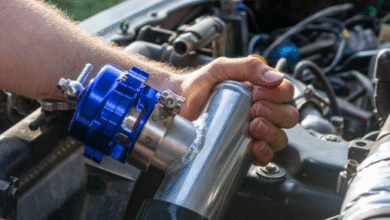Locating the reverse light switch in your vehicle is crucial for maintenance and troubleshooting. Here’s everything you need to know about where to find this essential component.
1. Reverse Light Switch
The reverse light switch is a small yet vital part of your vehicle’s electrical system, responsible for activating the reverse lights when you shift into reverse gear.
2. Understanding Its Function
When you engage the reverse gear, the reverse light switch completes the circuit, allowing electricity to flow to the reverse lights and illuminate the area behind your vehicle.
3. Checking the Transmission
In most vehicles, the reverse light switch is located on or near the transmission. Its exact placement may vary depending on the vehicle’s make and model.
4. Manual Transmission Vehicles
In vehicles equipped with manual transmissions, the reverse light switch is typically mounted on the transmission housing or gearbox.
5. Automatic Transmission Vehicles
For vehicles with automatic transmissions, the reverse light switch may be located on the transmission itself or on the gear selector mechanism.
6. Consulting the Owner’s Manual
If you’re unsure about the location of the reverse light switch in your vehicle, refer to the owner’s manual for detailed information and diagrams.
7. Underneath the Vehicle
In some cases, accessing the reverse light switch may require getting underneath the vehicle. Use jack stands or ramps to safely elevate the vehicle and gain access to the transmission area.
8. Near the Gearbox
Inspect the area near the gearbox or transmission for a small switch with electrical connections. This is likely the reverse light switch.
9. Following the Wiring
Trace the wiring harness from the reverse lights back towards the transmission to locate the reverse light switch. It’s often connected directly to the transmission via a short wire.
10. Identifying the Connector
Look for a connector attached to the reverse light switch. This connector allows for easy removal and replacement of the switch if necessary.
11. Considering Vehicle Age and Design
Older vehicles may have mechanical reverse light switches, while newer vehicles are more likely to have electronic switches that communicate with the vehicle’s computer system.
12. Using a Flashlight for Visibility
If the reverse light switch is difficult to see or reach, use a flashlight to illuminate the area and make it easier to locate.
13. Inspecting the Transmission Housing
Carefully inspect the transmission housing for any signs of the reverse light switch, such as mounting brackets or wiring connections.
14. Checking Near the Shifter
In some vehicles, particularly those with front-wheel drive layouts, the reverse light switch may be located near the shifter mechanism inside the vehicle.
15. Seeking Professional Assistance
If you’re unable to locate the reverse light switch on your own or if access is restricted, consider seeking assistance from a qualified mechanic or technician.
16. Importance of Proper Functionality
Ensuring that the reverse light switch is in good working condition is essential for safety, as it alerts other drivers and pedestrians when you’re backing up.
17. Testing the Switch
After locating the reverse light switch, perform a test to verify its functionality. Have someone observe the reverse lights while you shift into reverse gear.
18. Replacing a Faulty Switch
If the reverse light switch is malfunctioning or damaged, it will need to be replaced. Consult the vehicle’s service manual or a professional mechanic for guidance.
19. Considering Environmental Factors
The location of the reverse light switch may be affected by factors such as climate, road conditions, and driving habits. Inspect the area regularly for signs of wear or corrosion.
20. Maintaining Electrical Connections
Keep the electrical connections to the reverse light switch clean and secure to ensure proper operation. Use electrical contact cleaner to remove any dirt or debris.
21. Checking for Recalls
Occasionally, vehicle manufacturers issue recalls related to the reverse light switch or other components. Check for any open recalls and have them addressed promptly.
22. DIY Replacement
Replacing the reverse light switch yourself is possible for those with mechanical knowledge and experience. Follow the manufacturer’s instructions and safety precautions carefully.
23. Using OEM Parts
When replacing the reverse light switch, opt for OEM (Original Equipment Manufacturer) parts to ensure compatibility and reliability.
24. Testing After Replacement
After installing a new reverse light switch, conduct another test to confirm that the reverse lights are functioning correctly.
In conclusion, knowing where to find the reverse light switch in your vehicle is essential for maintenance and troubleshooting. By following these guidelines and tips, you can locate the switch and ensure that your reverse lights operate effectively and safely.




